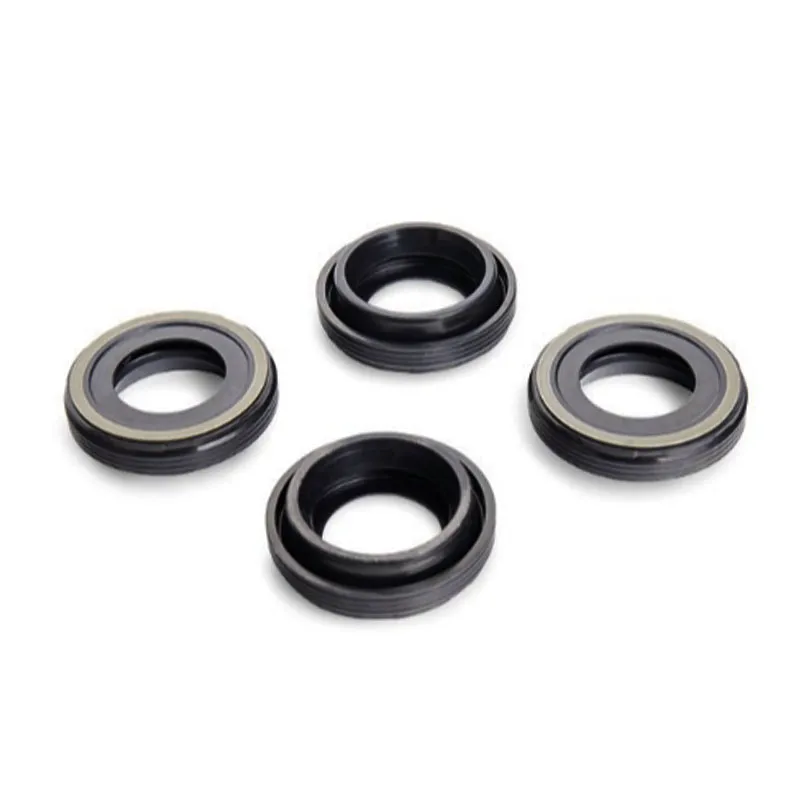rear end oil seal
Understanding Rear End Oil Seals Importance and Functionality
When it comes to automotive components, one often overlooked yet crucial part is the rear end oil seal. This small but vital component ensures that your vehicle operates smoothly by preventing oil leaks from the rear differential, thereby maintaining optimal performance and longevity of the vehicle.
What is a Rear End Oil Seal?
A rear end oil seal is a type of sealing device made from rubber or silicone, designed to retain lubricant within the differential assembly of a vehicle’s drive axle. The rear differential is responsible for distributing power from the engine to the wheels, allowing for smooth and efficient motion, especially in turning situations. The oil seal plays a critical role in keeping the differential lubricated by sealing off the area where the driveshaft enters the rear axle housing.
Importance of Oil Seals
1. Prevention of Leaks The primary function of a rear end oil seal is to prevent differential oil from leaking out. Leaking oil can lead to decreased lubrication, which may result in increased friction and wear of the gears and bearings within the differential. This can ultimately lead to severe damage and costly repairs if not addressed promptly.
2. Enhanced Performance A properly functioning oil seal helps maintain the right level of lubricant within the differential. This is essential for optimal performance, as a well-lubricated differential allows for smoother gear operation, which translates to better handling and ride quality.
3. Cost-Effective Maintenance Replacing a rear end oil seal is generally a straightforward and cost-effective maintenance task. Regular inspection and timely replacement can prevent more extensive damage to the differential assembly, saving vehicle owners significant repair costs in the long run.
4. Environmental Considerations Oil leaks are not only detrimental to vehicle performance but also pose environmental hazards. Oil spills can contaminate soil and waterways, leading to ecological issues. By ensuring that your rear end oil seal is in good condition, you are contributing to environmental preservation.
rear end oil seal

Signs of a Failing Rear End Oil Seal
Being proactive about vehicle maintenance includes being aware of the signs that your rear end oil seal may be failing. Some common indicators include
- Oil Spots Puddles or spots of oil under your vehicle, particularly towards the rear differential, can indicate a leaking oil seal. - Unusual Noise Grinding, whining, or other unusual noises coming from the rear differential could signal a lack of lubrication due to oil loss. - Decreased Performance If you notice a decline in vehicle performance, such as rough handling or difficulty in turning, it may be time to inspect the oil seals.
Maintenance Tips
To ensure the longevity of your rear end oil seals, consider the following maintenance tips
- Regular Inspection Periodically check for signs of leakage or damage, especially if you frequently drive under heavy loads or rough conditions. - Change Differential Oil Regularly change your differential oil as per the manufacturer’s recommendations to prevent sludge build-up and ensure a clean environment for the oil seals. - Professional Servicing When in doubt, consult a professional mechanic to assess the condition of your vehicle’s rear end oil seals, as well as the overall health of the differential.
Conclusion
In summary, while rear end oil seals may be small components, their impact on vehicle performance and longevity is significant. Understanding their role and recognizing the signs of wear can help you maintain optimal performance while also protecting the environment. Regular inspections and timely replacements are key to ensuring that your vehicle continues to run smoothly for years to come. Keeping an eye on these essential components can save you from potential headaches and costly repairs down the road.
-
Understanding the Front Main Engine Seal: Purpose, Maintenance, and Installation
News Jul.29,2025
-
Understanding O-Rings and Seal Rings: Types, Applications, and Custom Solutions
News Jul.29,2025
-
Understanding Crankshaft Oil Seals: Rear Seals, Pulley Seals, and Their Role in Engine Integrity
News Jul.29,2025
-
The Importance of Front and Rear Crankshaft Seals in Engine Performance and Oil Management
News Jul.29,2025
-
Crank Oil Seals: Functions, Types, and Cost Considerations in Engine Maintenance
News Jul.29,2025
-
A Comprehensive Guide to O-Rings and Seals: Types, Materials, and Global Applications
News Jul.29,2025
-
Mastering Diesel and Performance Engine Maintenance: A Guide to Critical Oil Gaskets
News Jul.28,2025
Products categories















